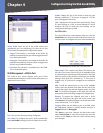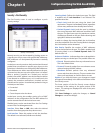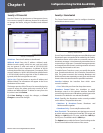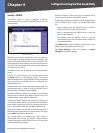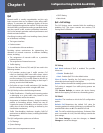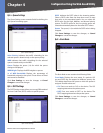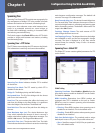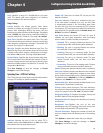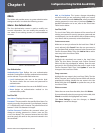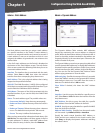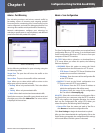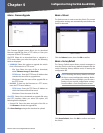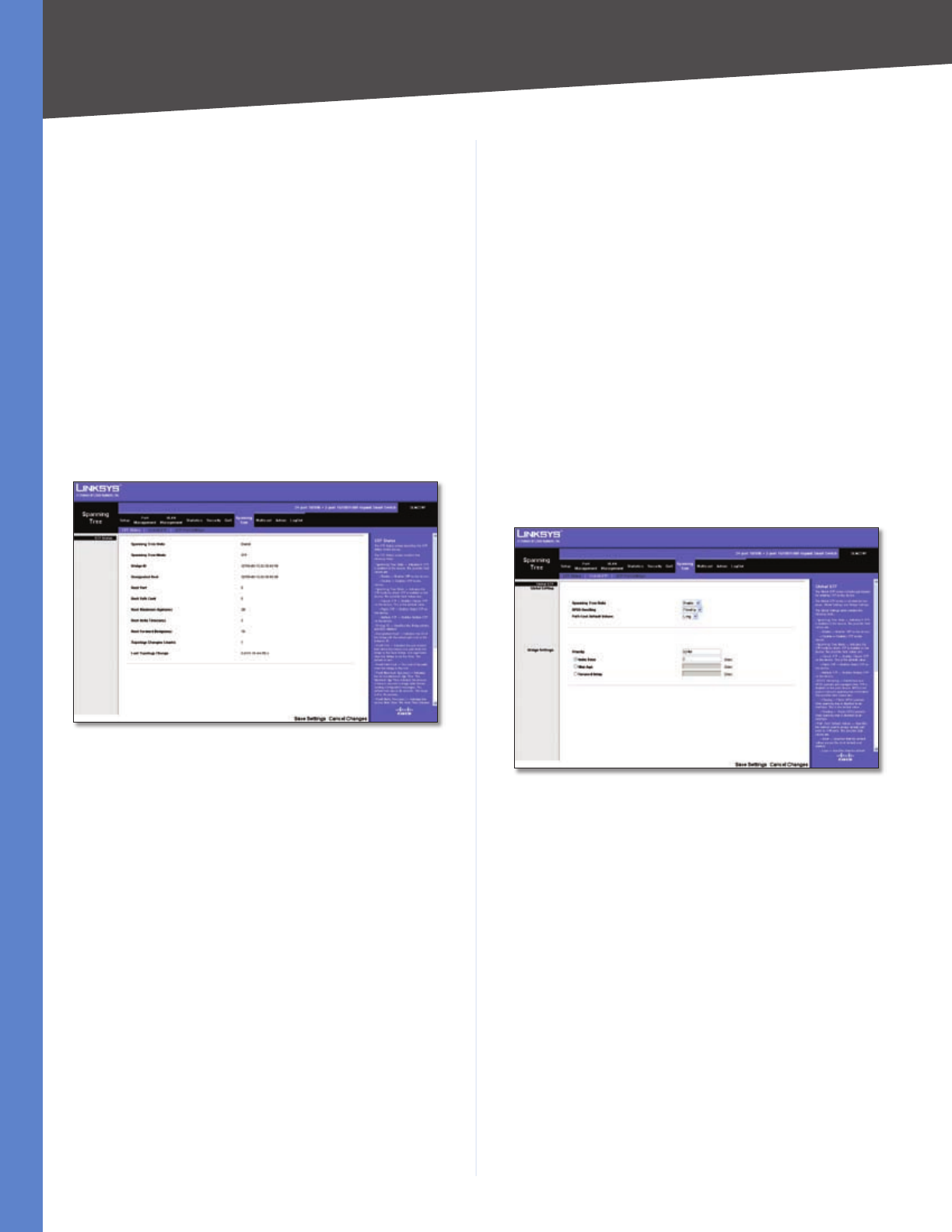
Chapter 4
Configuration Using the Web-based Utility
27
Business Series Smart Gigabit Ethernet Switch
Spanning Tree
Spanning Tree Protocol (STP) provides tree topography for
any arrangement of bridges. STP also provides one path
between end stations on a network, eliminating loops.
Loops occur when alternate routes exist between hosts.
Loops in an extended network can cause bridges to
forward traffic indefinitely, resulting in increased traffic
and reducing network efficiency.
The Switch supports the Classic STP version of STP, which
provides a single path between end stations, avoiding
and eliminating loops.
Spanning Tree > STP Status
The STP Status screen displays the STP status on the Switch.
This information is read-only and cannot be modified.
Spanning Tree > STP Status
Spanning Tree State Indicates whether STP is enabled
on the device.
Spanning Tree Mode The STP mode by which STP is
enabled on the device.
Bridge ID The Bridge priority and MAC address.
Designated Root The ID of the bridge with the lowest
path cost to the instance ID.
Root Port The port number that offers the lowest cost
path from this bridge to the Root Bridge. It is significant
when the Bridge is not the Root. The default is 0.
Root Path Cost The cost of the path from this bridge to
the root.
Root Maximum Age (sec) The device Maximum Age
Time, which indicates the amount of time in seconds a
bridge waits before sending configuration messages. The
default is 20 seconds. The range is 6 to 40 seconds.
Root Hello Time (sec) The device Hello Time. The Hello
Time indicates the amount of time in seconds a root bridge
waits between configuration messages. The default is 2
seconds. The range is 1 to 10 seconds.
Root Forward delay (sec) The device forward delay time.
The Forward Delay Time indicates the amount of time in
seconds a bridge remains in a listening and learning state
before forwarding packets. The default is 15 seconds. The
range is 4 to 30 seconds.
Topology Changes Counts The total amount of STP
state changes that have occurred.
Last Topology Change The elapsed time since the bridge
was initialized or reset, and the last topographic change
occurred. The time is displayed in a day hour minute
second format, for example, 2 days 5 hours 10 minutes
and 4 seconds.
Spanning Tree > Global STP
The Global STP screen contains global parameters for STP
on the Switch.
Spanning Tree > Global STP
Global Setting
Spanning Tree State Select Enable or Disable from the
drop-down menu to enable or disable STP on the Switch.
The default is Enable.
BPDU Handling Determines how BPDU packets are
managed when STP is disabled on the port or Switch.
BPDUs are used to transmit spanning tree information.
The possible values are:
Filtering Filters BPDU packets when spanning tree is
disabled on an interface. This is the default value.
Flooding Floods BPDU packets when spanning tree is
disabled on an interface.
Path Cost Default Values The method used to assign
default path costs to STP ports. The possible values are:
Short Specifies a range of 1-65,535 for port path costs.
This is the default value.
•
•
•



